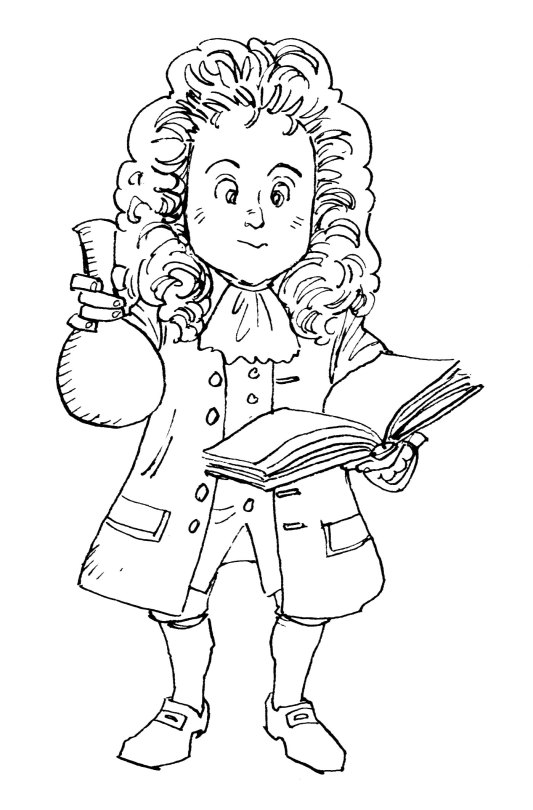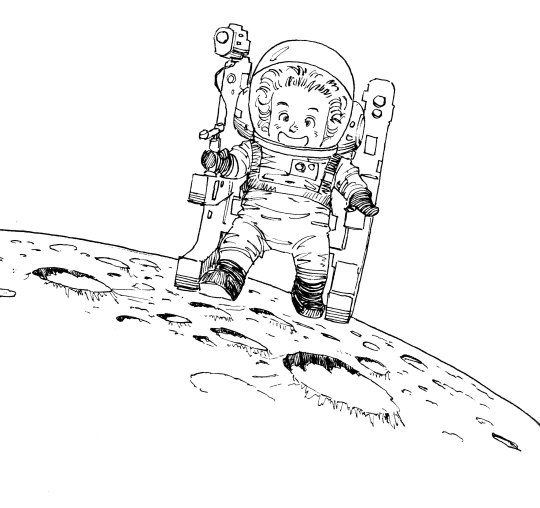#Newton: The Intellectual Giant who Built Modern Science
Text








All chibi Newtons from Newton: The Intellectual Giant who Built Modern Science
I was really surprised to find these in the print edition, since they weren't included in the digital version! Scanned and edited by me.
#isaac newton#Newton: The Intellectual Giant who Built Modern Science#books#manga#these are so adorable
3 notes
·
View notes
Text
Science: the forgotten culture by Edgar Jenkins

One of the intriguing aspects of British intellectual life is the way in which ‘culture’ is commonly interpreted. The responsibilities of the UK government Department of Digital, Culture, Media and Sport do not include science. The culture section of a national newspaper typically offers reviews of plays, concerts, operas or exhibitions, together with perhaps a short biography of one or more leading artists. Again, science does not feature, despite being a creative undertaking that has done much not only to transform the modern world but also to make it and to change profoundly how we understand it. What does this exclusion of science from the common understanding of ‘culture’ tell us?
I suggest that it points to a fundamental and widespread misunderstanding of the nature of science that has its origins in the way science is taught at school. School science presents students with a series of routine steps involving experiments in a laboratory or elsewhere that are presumed to lead to results that can be built into some kind of wider understanding, a brick in some incomplete cognitive wall or, with luck, form the basis of a theory. It’s an account that misses all that is fundamental to major scientific progress. Perhaps no less significant is the specialisation that characterises English post-16 education. Mixed A-levels involving both arts and science subjects are uncommon.
Gathering scientific data is not like collecting stamps or lapel badges. No amount of data can lead in any logical or pre-supposed way to the great creative leaps of the human imagination associated with the likes of Galileo, Newton, Darwin, Marie Curie, Einstein and a host of others before and since. We all ‘know’ that the sun moves across the sky each day but we also know that it doesn’t. Galileo’s heliocentric universe was, therefore, a ‘rape upon the senses’. Gravity is an intellectual construct, a product of Newton’s fertile mind, all the bolder for incorporating the deeply unfamiliar, seemingly absurd, idea of action at a distance. Einstein’s theories of relativity and the notion that space and time are a continuum are as remarkable ideas today as they were when first proposed in the early years of the last century. Scientific imagination can foster scientific entities and constructs that are far removed from everyday common sense experience. There are no limits on such imagination save that it and its implications must survive testing, in a variety of ways, including the quantitative, against the harsh world of reality.
It may fairly be claimed that these ‘giants’ of science are atypical. To the extent that they predate the modern era of ‘big science’ or don’t reflect the more mundane daily work of most scientists, the claim has some validity. But the adjective atypical can equally be applied to the likes of Shakespeare, Goethe, Mozart, Dickens or Churchill. In neither case can it be argued that others, with names less familiar or now forgotten, were engaged in activities that are fundamentally different from those of a legion of others. We do not now judge Salieri the equal of Mozart but we accept that both were composers.
School science, however, cannot take all the blame for the exclusion of science from culture. There is also the long-established claim that science brings an indifference to, or disenchantment with, the natural world. In Wordsworth’s telling phrase, science ‘murdered to dissect’. Keats in his poem Lamia saw science as conquering ‘all mysteries by rule and line’, a poem that prompted the title of Richard Dawkins‘s 1998 book, Unweaving the Rainbow. Whitman wrote of how he needed to ‘look up in perfect silence at stars’, when confronted with the proofs, the figures, charts and diagrams of the astronomer. The objection of these poets was to the reductionism underpinning science, an approach that threatened what the Romantic poets and many others saw as the ‘mystery of the whole’.
In the 1880s, Matthew Arnold, by no means hostile to science, attributed its cultural inadequacy to its failure to address man’s moral nature. For Arnold, it was literature that provided, par excellence, the edifying dimension of culture that science could never have. It is not necessary to engage with Arnold’s belief to acknowledge that it would continue to strike a chord. In 1959, Snow used the Rede lectures at Cambridge to draw attention to two cultures, the artistic and the scientific, and the assumed superior status of the former.
So it seems that science is not cultural, is morally inferior as an educational tool, and threatens to deprive us of a sense of wonder about the natural world. In addition, some choose to reject its outcomes, from creationists and those who believe the earth is flat to others opposed to vaccination or who seek complex truth about the natural world in ancient scriptural texts.
Now, perhaps more than ever, there is a powerful case for appreciating that the world can be understood from a variety of perspectives, each of which accommodates profoundly different criteria and strategies for seeking and establishing truth. The difficulty for science is that multiple truths about the natural world are rarely all equally valid.
Edgar Jenkins is a retired professor who has written extensively about the social and political history of school science. His most recent book is Science for All: the struggle to establish schools science in England.
0 notes
Text
New Post has been published on Myupdatestudio
New Post has been published on https://myupdatestudio.com/how-aristotle-created-the-laptop/
How Aristotle Created the Laptop
the records of computers is often informed by a history of gadgets, from the abacus to the Babbage engine up through the code-breaking machines of worldwide Conflict II. In reality, it’s far higher understood as records of ideas, in particular thoughts that emerged from mathematical logic, an obscure and cult-like area that first evolved within the 19th century. The mathematical common sense was pioneered by way of philosopher-mathematicians, maximum significantly George Boole and Gottlob Frege, who had been themselves inspired by Leibniz’s dream of a widely wide-spread “concept language,” and the ancient logical machine of Aristotle.
Created the Laptop
Aristotle Contributions
Mathematical good judgment was, to begin with considered a hopelessly summary concern and not using potential packages. As one Computer scientist commented: “If in 1901, a skilled and sympathetic outsider have been known as upon to survey the sciences and name the branch which would be least fruitful in [the] century ahead, his choice may nicely have settled upon mathematical common sense.” And but, it might offer the inspiration for a subject that could have extra effect in the modern world than any other.
The evolution of Pc science from mathematical common sense culminated within the Thirties, with two landmark papers: Claude Shannon’s “A Symbolic Analysis of Switching and Relay Circuits,” and Alan Turing’s “On Computable Numbers, With a Utility to the Entscheidungsproblem.” within the history of Laptop technology, Shannon and Turing are towering figures, however, the significance of the philosophers and logicians who preceded them is regularly neglected.
A record of Laptop science describes Shannon’s paper as “possibly the most vital, and also the maximum cited, grasp’s thesis of the century.” Shannon wrote it as an electrical engineering scholar at MIT. His adviser, Vannevar Bush, built a prototype Pc called the Differential Analyzer that could rapidly calculate differential equations. The tool turned into commonly mechanical, with subsystems controlled by using electric relays, which had been organized in an ad hoc manner as there was not but a systematic concept underlying circuit layout. Shannon’s thesis subject matter took place while Bush advocated he tries and finds out this kind of principle.
Today, Poole’s call is widely known to Pc scientists (many programming languages have a basic records kind referred to as a Boolean), but in 1938 he changed into rarely read outside of philosophy departments. Shannon himself encountered Boole’s work in an undergraduate philosophy class. “It simply befell that no one else changed into familiar with both fields on the equal time,” he commented later.
Boole is regularly defined as a mathematician, but he saw himself as a logician, following in the footsteps of Aristotle. The Legal guidelines of Idea start with an outline of his dreams, to investigate the fundamental Laws of the operation of the human thoughts:
The layout of the following treatise is to investigate the fundamental Laws of those operations of the thoughts by means of which reasoning is accomplished; to present expression to them in the symbolical language of a Calculus, and upon this foundation to establish the science of common sense … And, in the end, to accumulate … some possible intimations regarding the nature and constitution of the human mind.
He then pays tribute to Aristotle, the inventor of common sense, and the primary affect on his personal work:
In its historic and scholastic form, certainly, the issue of common sense stands almost solely associated with the superb name of Aristotle. As it was supplied to historical Greece inside the in part technical, partially metaphysical disquisitions of The Organon, such, with scarcely any critical change, it has persevered to the contemporary.
Looking to improve at the logical work of Aristotle was an intellectually daring flow. Aristotle’s good judgment, offered in his six-element e-book The Organon, occupied an imperative place within the scholarly canon for greater than 2,000 years. It becomes widely believed that Aristotle had written almost all there was to mention on the topic. The exceptional philosopher Immanuel Kant commented that, since Aristotle, good judgment had been “unable to take an unmarried leap forward, and therefore appears to all appearance to be finished and complete.”
Create TV Cooking
Even though ostensibly approximately geometry, the Elements became a general textbook for teaching rigorous deductive reasoning. (Abraham Lincoln once stated that he discovered sound prison argumentation from reading Euclid.) In Euclid’s machine, geometric ideas were represented as spatial diagrams. Geometry endured being practiced this manner till René Descartes, within the 1630s, confirmed that geometry should rather be represented by formulas. His Discourse on Technique became the first arithmetic text inside the West to popularize what’s now trendy algebraic notation — x, y, z for variables, a, b, c for regarded quantities, and so on.
Descartes’s algebra allowed mathematicians to transport beyond spatial intuitions to govern symbols using precisely described formal regulations. This shifted the dominant mode of arithmetic from diagrams to the formulation, leading to, amongst other things, the improvement of calculus, invented roughly 30 years after Descartes via, independently, Isaac Newton and Gottfried Leibniz.
Boole’s aim changed into to do for Aristotelean common sense what Descartes had done for Euclidean geometry: loose it from the boundaries of human intuition by way of giving it a unique algebraic notation. to offer an easy instance, when Aristotle wrote:
Another way to characterize Shannon’s success is that he became first to distinguish among the logical and the bodily layer of computer systems. (This distinction has become so essential to Pc science that it might seem surprising to modern readers how insightful it was at the time—a reminder of the adage that “the philosophy of one century is the commonplace sense of the following.”)
for the reason that Shannon’s paper, a sizable amount of progress has been made on the bodily layer of computer systems, along with the discovery of the transistor in 1947 by William Shockley and his colleagues at Bell Labs. Transistors are dramatically improved variations of Shannon’s electric relays — the great known way to bodily encode Boolean operations. Over the following 70 years, the semiconductor industry packed increasingly transistors into smaller areas. A 2016 iPhone has approximately 3.three billion transistors, each one a “relay switch” like those pictured in Shannon’s diagrams.
At the same time as Shannon confirmed how to map good judgment onto the physical world, Turing showed a way to design computer systems within the language of mathematical common sense. whilst Turing wrote his paper, in 1936, he changed into Trying to solve “the selection hassle,” first diagnosed by the mathematician David Hilbert, who asked whether or not there has been a set of rules that might determine whether or not an arbitrary mathematical statement is authentic or fake. In comparison to Shannon’s paper, Turing’s paper is fairly technical. It’s number one historical significance lies not in its solution to the choice hassle, however, in the template for Pc design, it furnished alongside the way.
Best Laptops
Turing turned into working in a lifestyle stretching again to Gottfried Leibniz, the philosophical giant who evolved calculus independently of Newton. amongst Leibniz’s many contributions to modern Idea, one of the maximum exciting was the idea of a new language he known as the “widely wide-spread characteristic” that, he imagined, should represent all feasible mathematical and clinical knowledge. inspired in component by the thirteenth-century religious truth seeker Ramon Llull, Leibniz postulated that the language might be ideographic like Egyptian hieroglyphics, besides characters might correspond to “atomic” concepts of math and science. He argued this language could give humankind a “tool” that could beautify human motive “to a far extra quantity than optical contraptions” like the microscope and telescope.
0 notes
Text
Translation To-Do List
I've started a collection of biographical Newton mangas, and I really want to start up a project to scanlate them.


(1993) Newton: The Scientist who Discovered the Law of Gravitation
A manga with a really cute shonen style (for some reason, Newton looks the most childlike of all, looking boyish even into old age, lol.
It's not as realistic when it comes to his personality, softening down his rages and petty behavior in favor of making him seem a lot more friendly and sociable than he was. It also villainizes Hooke (as is typical) but overall it looks like a pleasant read, if you can get past the fact that it was made for children.


(1994) Newton: The Intellectual Giant who Built Modern Science
This one has a grittier seinen style, highlighting more of Newton's darker moments throughout his life. It's about twice as long as the other one, at around 200 pages.
There are a couple more books on my wish list, but overseas shipping is expensive so I'll just make do with these for now.
I also have a few other assorted comic scans, like a cameo of Newton, Hooke, and others in another original manga.
1 note
·
View note